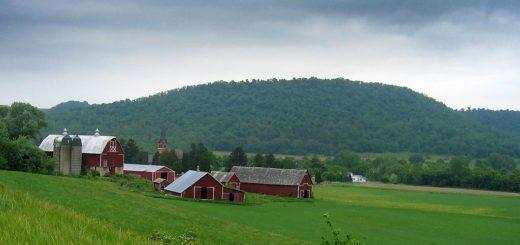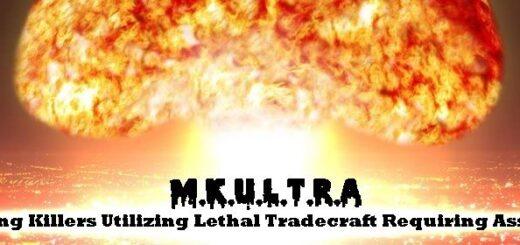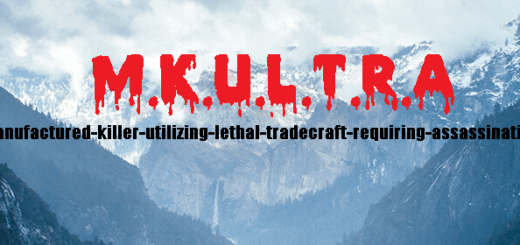Real Polar Bear Science-They’re THRIVING

Polar bear prowling small Labrador town cut off by storm had authorities on high alert
Posted on March 1, 2019 | Comments Offon Polar bear prowling small Labrador town cut off by storm had authorities on high alert
From CBC News late yesterday (28 February 2019) comes the news that a polar bear seen skulking around the homes of a small coastal town in Labrador this week has had residents on edge and authorities on high alert. If tragedy struck, the St. Lewis road was blocked by snow and the only way in or out was by helicopter. Message: polar bears are highly dangerous and a bear prowling a community is a very real threat to safety.
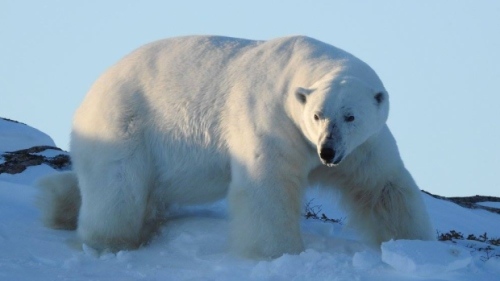
This bear visited Black Tickle in Labrador a few years ago. Edwin Clark photo.
According to a CTV News follow-up, while the road to St. Lewis was cut off because of a recent snowstorm for most of the week, wildlife officers were able to get in today (Friday 1 March). Sighting about 100km north in Charlottetown earlier in the week are believed to be the same bear.
The last sighting of the animal was Thursday morning (28 Feb), so the bear may now have left of its own accord. No one seems to have captured a photo.
However, the fear felt by residents of St. Lewis (population 200) in this story is palpable, especially after the terrifying visuals from the well-publicized invasion by more than 50 polar bears at Belushaya Guba on Novaya Zemlya last month.
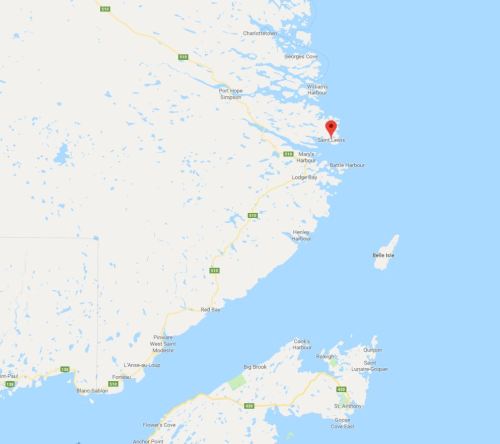
St. Lewis is located at the red marker; Charlottetown is the third town to the north. Both are just north of the Strait of Belle Isle that separates Labrador from the island of Newfoundland.
Comments Offon Polar bear prowling small Labrador town cut off by storm had authorities on high alert
Posted in Polar bear attacks, Sea ice habitat
Tagged attack, dangerous, invasion, Labrador, polar bear, safety, sea ice, sighting, St. Lewis, threat, winter
State of the Polar Bear Report 2018: Polar bears continue to thrive
Posted on February 27, 2019 | Comments Offon State of the Polar Bear Report 2018: Polar bears continue to thrive
PRESS RELEASE 27 FEBRUARY 2019, INTERNATIONAL POLAR BEAR DAY
New Report: Polar Bears Continue To Thrive
Inuit paying the price of rising bear populations
The State of the Polar Bear Report for 2018, published today by the Global Warming Policy Foundation, confirms that polar bears are continuing to thrive, despite recent reductions in sea ice levels. This finding contradicts claims by environmentalists and some scientists that falls in sea ice would wipe out bear populations.
The report’s author, zoologist Dr Susan Crockford, says that there is now very little evidence to support the idea that the polar bear is threatened with extinction by climate change.
“We now know that polar bears are very resourceful creatures. They have made it through warm periods in the past and they seem to be taking the current warming in their stride too”.
In fact, it is the human residents of the Arctic who seem to have most to worry about. With more and more bears on the landscape at all times of year, there have been worrying reports of people being threatened, mauled and even killed, particularly from Nunavut, in the Canadian north.
As Dr Crockford explains,
“The people of Nunavut are not seeing starving, desperate bears – quite the opposite. Yet polar bear specialists are saying these bears are causing problems because they don’t have enough sea ice to feed properly. The facts on the ground make their claims look silly, including the abundance of fat bears. Residents are pushing their government for a management policy that makes protection of human life the priority.”
UPDATE: Read my opinion piece in Canada’s Financial Post here.
KEY FINDINGS [READ THE WHOLE THING HERE]
· Data published since 2017 show that global polar bear numbers have continued to increase slightly since 2005, despite the fact that summer sea ice in 2018 was again at a low level not expected until mid-century: the predicted 67% decline in polar bear numbers did not occur.
· Despite marked declines in summer sea ice, Chukchi Sea polar bears continue to thrive: reports from the first population-size estimate for the region, performed in 2016, show bears in the region are abundant (almost 3000 individuals), healthy and reproducing well.
· National Geographic received such a profound backlash from its widely viewed ‘this is what climate change looks like ’ starving polar bear video, released in late 2017, that in 2018 it made a formal public apology for spreading misinformation.
· In Canada, where perhaps two-thirds of the world’s polar bears live, the Committee on the Status of Endangered Wildlife (COSEWIC) decided in 2018 to continue to list the polar bear as a species of ‘Special concern’ rather than upgrade to ‘Threatened.’
· Polar bear attacks made headlines in 2018: two fatal attacks in Nunavut, Canada and a narrowly averted death-by-mauling in northern Svalbard caught the world by surprise.
Citation: Crockford, S.J. 2019. State of the Polar Bear Report 2018. Global Warming Policy Foundation Report 32, London.
Comments Offon State of the Polar Bear Report 2018: Polar bears continue to thrive
Posted in Conservation Status, Life History, Polar bear attacks, Population, Sea ice habitat, Summary
Tagged attacks, International Polar Bear Day, Inuit, key findings, Nunavut, polar bear, press release, sea ice, State of the Polar Bear
International Polar Bear Day: a time to admit the species is not threatened with extinction due to reduced sea ice habitat
Posted on February 26, 2019 | Comments Offon International Polar Bear Day: a time to admit the species is not threatened with extinction due to reduced sea ice habitat
Times have changed: where once many scientists worried that polar bears could not survive an Arctic with 40% less ice, now the concern is that people of the Arctic might not be able to keep themselves safe from growing numbers of increasingly fearless bears.
International Polar Bear Day is tomorrow, 27 February. It’s a good time to reconsider polar bear conservation in light of current realities. Polar bears are not threatened with extinction by loss of sea ice habitat but continue to thrive in spite of it (Crockford 2017).
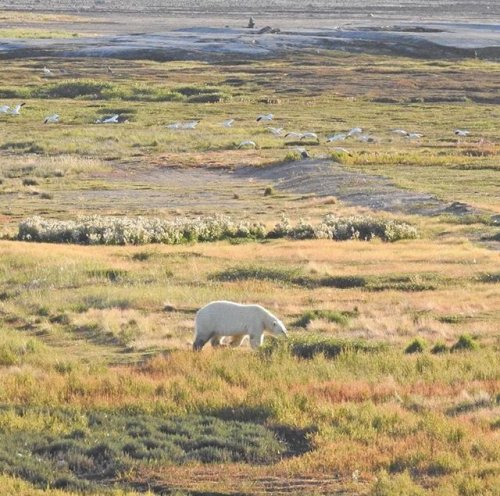
Fat bear in August 2017 outside Arviat, Nunavut. Gordy Kidlapik photo.
Tomorrow, the 2018 State of the Polar Bear Report will be released. But for now, see some of the failed claims below.
Comments Offon International Polar Bear Day: a time to admit the species is not threatened with extinction due to reduced sea ice habitat
Posted in Advocacy, Conservation Status, Polar bear attacks, Population
Tagged attacks, breakup, fat bears, freeze-up, polar bear, population, problem bears, sea ice, threatened, western hudson bay
Ringed and bearded seals, still listed as ‘threatened’, are still doing really well
Posted on February 24, 2019 | Comments Offon Ringed and bearded seals, still listed as ‘threatened’, are still doing really well
This isn’t news but it’s good to hear it again, this time from the mouth of one of the biologists who collects the data: against all odds, the primary prey species of polar bears are doing spectacularly well.
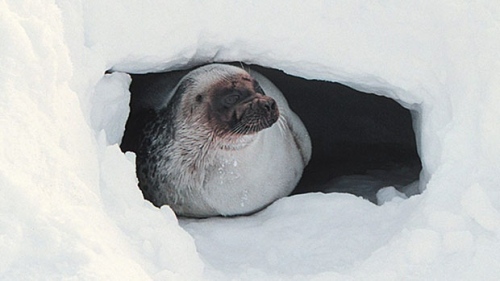
According to leading seal biologist Lori Quakenbush of Alaska Department of Fish and Game, ringed and bearded seals in the Chukchi Sea are doing great (ADN, 11 February 2019, “Seals seem to be adapting to shrinking sea ice off Alaska”):
“We’re seeing fat seals,” said Lori Quakenbush, a wildlife biologist with the Alaska Department of Fish and Game’s Arctic Marine Mammal Program. “They are reproducing earlier than they have in the past, which says they are getting enough nutrition at this point to grow quickly and become reproductive at an earlier age.”
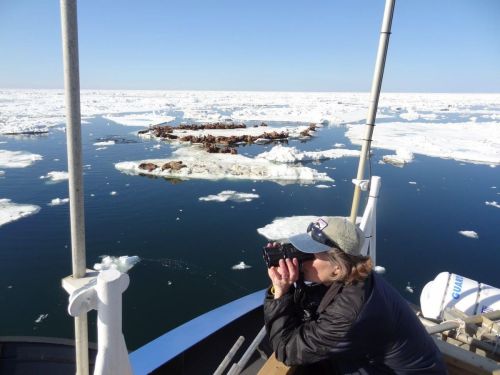
Ringed and bearded seals across the Arctic, including the Chukchi and Bering Seas, were listed as threatened in 2012 by the US, hot on the heels of polar bears given the same status in 2008 (USFWS 2008, 2012a, 2012b). But American biologists didn’t even pretend that the seals were currently suffering, they simply assumed they would sometime in the future (Cameron et al. 2010; Kelly et al. 2010).
Now, ten years worth of low sea ice of the kind expected to drive polar bears to the brink of extinction later, and ringed and bearded seals are doing better than they did in the late 1970s and early 1980s when there was more summer ice (Adam et al. 2019; Crawford and Quakenbush 2013; Crawford et al. 2015). Quakenbush now has data that extends the period of recent research to 2016, from 2013 previously.
It’s hard to imagine stronger evidence in support of retracting the ESA ‘threatened’ species status designation for ringed and bearded seals: clearly, ringed and bearded seals did not respond as expected when summer sea ice declined dramatically in 2007.
However, all that seems to have happened is that Quakenbush is willing to admit to a journalist that biologists can’t tell the future:
“…two predictions that we made about what could be bad for walruses, just within a couple of years turned around and were sort of the opposite.”
Quakenbush has been watching marine mammals throughout her long career, and she has given up predicting their future. She says that biologists know what the animals do with ice because they have studied that, but we don’t know what they do without it.
Read the whole thing here.
Unfortunately, predicting the future was precisely what US biologists insisted they could do accurately in 2012, even though no other conservation organization in the world concurred with their assessemnt, including the IUCN. The IUCN Red List classified both ringed and bearded seals as species of ‘Least Concern’ in 2008 and in 2016 (Kovacs 2016; Lowry 2016; Kovaks and Lowry 2008; Kovacs et al. 2008).1
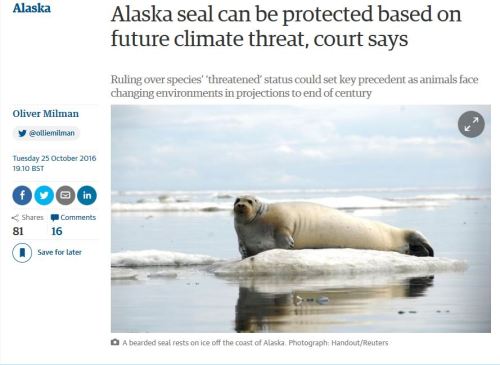
Footnote 1. The suggestion made in this article that Sea of Okhotsk ringed seals have only recently begun to give birth on the sea ice without making snow caves or ‘lairs’ is not true. Sea of Okhotsk ringed seals have been known to give birth in the pack ice (not on fast ice) without snow dens since at least the 1960s (Fedoseev 1975:158; Kelly et al. 2010a:10) and also in the ice of western Svalbard (Smith et al. 1991:129).
REFERENCES
Adam, R., Bryan, A., Quakenbush, L., Crawford, J., and Biderman, L.2019. Bearded seal productivity in Alaska using harvest-based monitoring, 1975-2016. Poster presentation, Alaska Marine Science Symposium, 28 January-1 February.
Abstract: Declines in arctic sea ice extent, thickness, and duration are projected to negatively impact bearded seals (Erignathus barbatus) by reducing their time to rest, pup, nurse, and molt on sea ice. Existing population estimates for bearded seals in Alaska cannot be used to detect trends; however, the Alaska Department of Fish and Game works with Alaska Native hunters to collect data from the subsistence harvest that are used to determine several population health indices, such as: pregnancy rate, age of maturity, and the proportion of pups in the sampled harvest. These indices were previously used to determine if declines in sea ice have affected bearded seals between 1975–1984 and 2003–2014.
During these time periods pregnancy rates varied minimally (92–99%); however, the average age of maturity decreased from 4.2 years in 1975–1984 to 2.9 years in 2003–2014. Additionally, pups were harvested in lower proportions during 1975–1984 than during 2003–2014 (26% and 48%, respectively), indicating that pups are still being produced, weaned, and are surviving to be harvested. Through 2014, we have not detected the decreases in population indices that have been predicted to occur with climate change. However, due to continued declines in sea ice, further monitoring is important; therefore, here we update our 1975–2014 results to include samples from 2015 and 2016.
Cameron, M. F., Bengtson, J. L., Boveng, J. K., Jansen, J. K., Kelly, B. P., Dahle, S. P., Logerwell, E. A., Overland, J. E., Sabine, C. L., Waring, G. T. and Wilder, J. M. 2010. Status review of the bearded (Erignatha barbatus). NOAA Technical Memorandum NMFS-AFSC-211.
www.afsc.noaa.gov/Publications/AFSC-TM/NOAA-TM-AFSC-211.pdf
Crawford, J. and Quakenbush, L. 2013. Ringed seals and climate change: early predictions versus recent observations in Alaska. Oral presentation by Justin Crawfort, 28th Lowell Wakefield Fisheries Symposium, March 26-29. Anchorage, AK. Abstract below, find pdf here:http://seagrant.uaf.edu/conferences/2013/wakefield-arctic-ecosystems/program.php
Crawford, J.A., Quakenbush, L.T. and Citta, J.J. 2015. A comparison of ringed and bearded seal diet, condition and productivity between historical (1975–1984) and recent (2003–2012) periods in the Alaskan Bering and Chukchi seas. Progress in Oceanography 136:133-150.
Fedoseev, G. A. 1975. Ecotypes of the ringed seal (Pusa hispida Schreber, 1777) and their reproductive capabilities. In Biology of the Seal, K. Ronald and A.W. Mansfield (eds.), pp. 156-160. Rapports et Proces-verbaux des Reunions, Conseil International Pour L’Exploration de la Mer 169.
Kelly, B. P., Bengtson, J. L., Boveng, P. L., Cameron, M. F., Dahle, S. P., Jansen, J. K., Logerwell, E. A., Overland, J. E., Sabine, C. L., Waring, G. T. and Wilder, J. M. 2010. Status review of the ringed seal (Phoca hispida). NOAA Technical Memorandum NMFS-AFSC-212.
www.afsc.noaa.gov/Publications/AFSC-TM/NOAA-TM-AFSC-212.pdf
Kovacs, K.M. 2016. Erignathus barbatus. The IUCN Red List of Threatened Species 2016: e.T8010A45225428. http://www.iucnredlist.org/details/full/8010/0
Kovacs, K. and Lowry, L. (IUCN SSC Pinniped Specialist Group) 2008. Erignathus barbatus. In: IUCN 2012. IUCN Red List of Threatened Species. Version 2012.2. . Downloaded on 29 December 2012. http://www.iucnredlist.org/details/8010/0
Kovacs, K., Lowry, L. and Härkönen, T. (IUCN SSC Pinniped Specialist Group) 2008. Pusa hispida. In: IUCN 2012. IUCN Red List of Threatened Species. Version 2012.2. . Downloaded on 29 December 2012. http://www.iucnredlist.org/details/41672/0
Lowry, L. 2016. Pusa hispida. The IUCN Red List of Threatened Species 2016: e.T41672A45231341. http://www.iucnredlist.org/details/41672/0
Smith, T. G., Hammill, M. O. and Taugbøl, G. 1991. A review of the development, behavioural and physiological adaptations of the ringed seal, Phoca hispida, to life in the arctic winter. Arctic 44:124-131.
US Fish & Wildlife Service (USFWS). 2008. Determination of threatened status for the polar bear (Ursus maritimus) throughout its range. Federal Register 73: 28212-28303.
US Fish & Wildlife Service (USFWS). 2012a. Threatened status for the Arctic, Okhotsk and Baltic subspecies of the ringed seal. Federal Register 77: 76706–76738.
US Fish & Wildlife Service (USFWS). 2012b. Threatened status for the Beringia and Okhotsk distinct population segments of the Erignathus barbatus nauticus subspecies of the bearded seal. Federal Register 77: 76740–76768.
Comments Offon Ringed and bearded seals, still listed as ‘threatened’, are still doing really well
Posted in Conservation Status, Life History, Sea ice habitat
Tagged Alaska, bearded seal, birth lair, Chukchi Sea, IUCN Red List, Least Concern, polar bears, prey, Quakenbush, ringed seal, sea ice, snow cave, threatened
Bear on shore in January that threatened residents of Foxe Basin community was shot
Posted on February 20, 2019 | Comments Offon Bear on shore in January that threatened residents of Foxe Basin community was shot
According to a report by CBC News earlier this week (18 February 2019), there was a defence kill of a potentially dangerous polar bear and her cub in Foxe Basin, Nunavut on January 4th that we are just hearing about now. Yet another bear on shore in winter, when there is plenty of sea ice, looking for food in an Arctic community and threatening the lives of its residents while a polar bear specialist blames such incidents on lack of ice.

Polar bear on shore in Labrador, early March 2017, VOCM report
Comments Offon Bear on shore in January that threatened residents of Foxe Basin community was shot
Posted in Advocacy, Polar bear attacks, Sea ice habitat
Tagged attack, defence, defense, Foxe Basin, polar bear, risk, sea ice, threat, too many bears, winter
Polar bears driven out of Novaya Zemlya town onto the ice by persistent harassment
Posted on February 19, 2019 | Comments Offon Polar bears driven out of Novaya Zemlya town onto the ice by persistent harassment
The state of emergency in Belushya Guba on Novaya Zemlya is over, according to a report yesterday from the Russian news agency TASS(18 February 2019), as no bears had been spotted over the previous 24 hours.
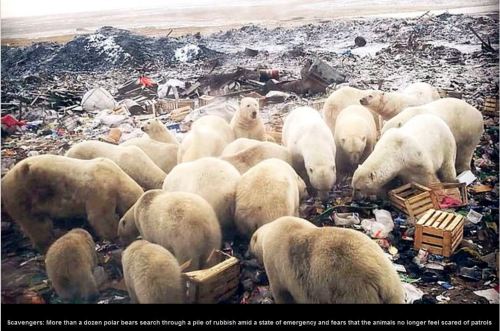
Comments Offon Polar bears driven out of Novaya Zemlya town onto the ice by persistent harassment
Posted in Advocacy, Polar bear attacks, Sea ice habitat
Tagged attack, Barents Sea, climate change, invasion, Kara Sea, Novaya Zemlya, polar bear, Russia, sea ice, seige, state of emergency
Polar bears walking the streets on Novaya Zemlya are habituated garbage bears, not victims of climate change
Posted on February 14, 2019 | Comments Offon Polar bears walking the streets on Novaya Zemlya are habituated garbage bears, not victims of climate change
What a bunch of sensationalist claptrap about the polar bears on Novaya Zemlya but I guess it sells papers and raises donations (WWFand PBI, I mean you).1
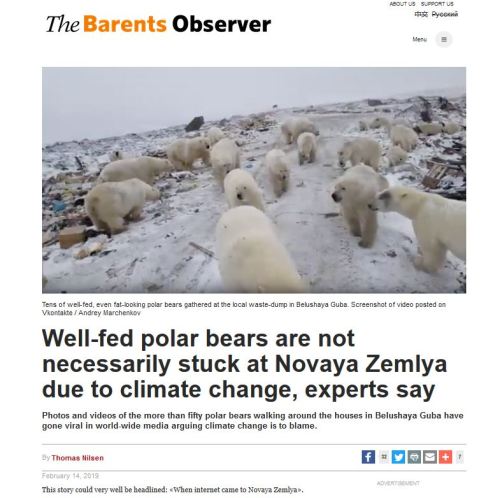
Seriously, if the bears were coming for us, people in Belushaya Guba would have died already, probably EATEN. These particular bears know there is stored food and refuse available that does not come packaged in human form and they know from experience that humans won’t hurt them. As I pointed out in my last post, these bears have known this since early December, when they chose to stay on land over the winter and ignored the sea ice when it arrived.
Lack of sea ice is not the problem here. These are habituated garbage bears that are no longer safe to have around: the responsible option is to shoot them. It’s harsh, I know, but the population will recover from the loss.

If you suddenly cut off their passive food supply (fence or close the dump, deal more carefully with individual refuse and stored food), all of these bears in the photos and videos being flashed across the Internet will become desperate and truly dangerous. Remember, just last summer an emaciated, desperate bear almost killed a cruise ship guard: he had a loaded gun and was actively looking for bears, yet the bear managed to ambush him. He’d have died if he’d been alone.
Of course the refuse and stored food problem needs to be dealt with, in Belushaya Guba and elsewhere across the Arctic, but these particular bears cannot be saved. Cleaning up these issues takes time, coordination, and money. Ask Churchill, Manitoba, who for years wrestled with these issues before a workable solution was agreed upon. And while few Arctic communities can afford to do it the Churchill way, virtually all must contend with the very real threat of polar bears both inside and outside their communities. Ask the Inuit of Arviat and Naujaat, who each lost a young man last summer to a predatory attack by a polar bear that happened well outside their respective villages and where lack of sea ice was not an issue.
Blaming this on climate change is the Paul Nicklen starving polar bear video all over again. You remember the one, the video that National Geographic got so much push-back about that they had to make a public apology for spreading misinformation?
Do climate change promoters really need another fiasco featuring polar bears?
Comments Offon Polar bears walking the streets on Novaya Zemlya are habituated garbage bears, not victims of climate change
Posted in Advocacy, Polar bear attacks, Sea ice habitat
Tagged attacks, Churchill, climate change, fatalities, garbage, global warming, habituated, Novaya Zemlya, patrol, polar bear, problem bears, sea ice, stored food


